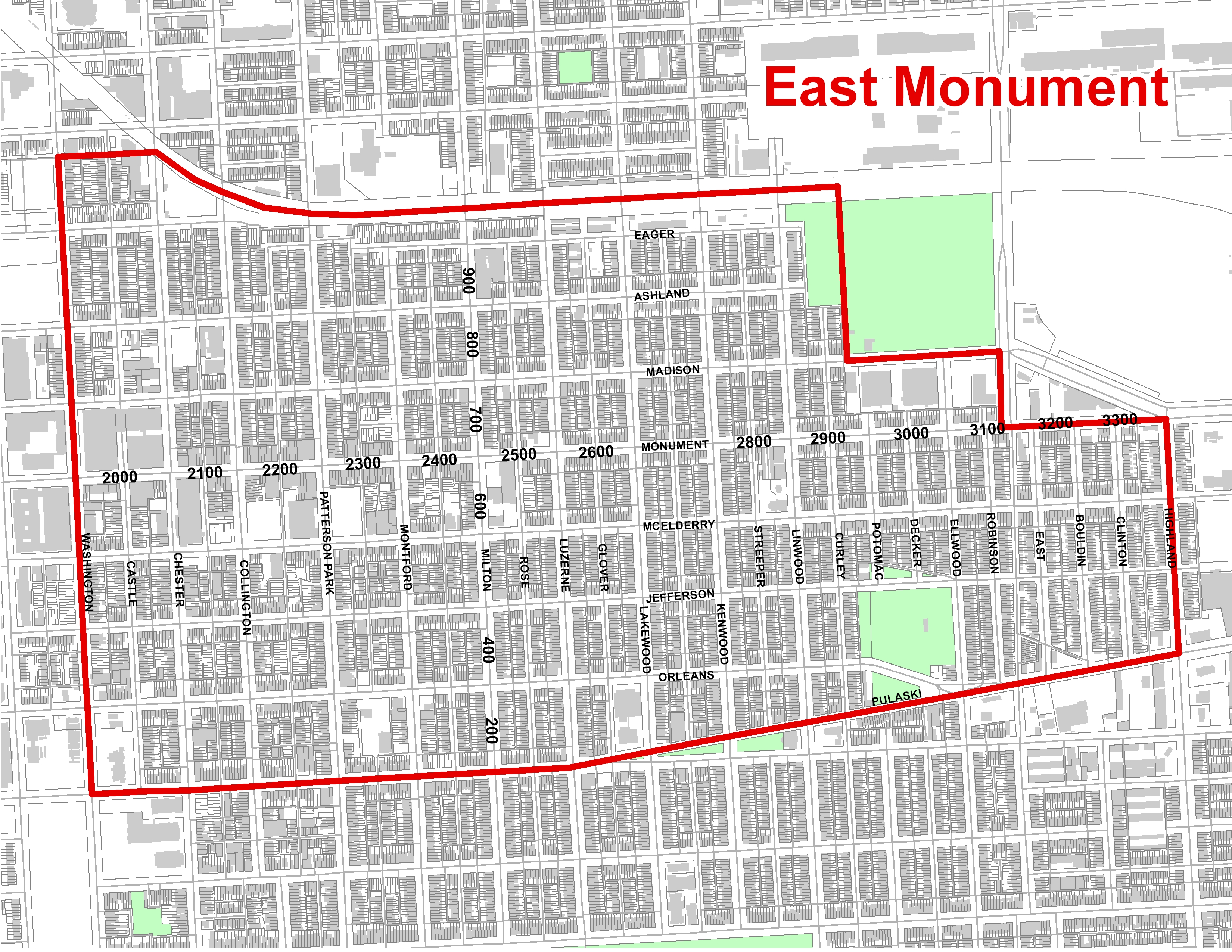East Monument
 Desicription
Desicription
The East Monument Historic District, located in East Baltimore, is a large residential neighborhood with a commercial core along East Monument Street. The district is bounded by East Eager Street to the north, by North Highland Street, Edison Highway, and North Curley Street to the east, by Pulaski Highway and East Fayette Street to the south, and by North Washington Street to the west. The Patterson Park/Highland Town and South Clifton Park historic districts are immediately adjacent to the district. Much of the earliest development built by and for the City’s growing Bohemian population and dating to the 1870s has been demolished for an expansion to Johns Hopkins Hospital. Despite this loss, many later dwellings in the neighborhood were constructed by well known Bohemian architects and builders for the Bohemian residents, most significantly Frank Novak. The neighborhood is primarily composed of rowhouses dating to the last decades of the 19th century and the early twentieth century, including two-story, two-bay Italianate and Neoclassical style residences. The East Monument neighborhood was developed so that each block contained a variety of housing, with more modest housing located along narrow streets and alleys, and more expensive homes located along the wider roads. This block layout was typical of the Baltimore streetscapes at the turn of the twentieth century.
Statement Of Significance
The East Monument Historic District is significant for its association with the local Bohemian immigrant community and the late 19th and early 20th century Neoclassical and Italianate rowhouses constructed predominantly by Bohemian-born builders. The Bohemian influence on the East Monument neighborhood can be seen through its institutions and architecture. When the Bohemian National Parish of the Roman Catholic Church, St. Wenceslaus was established in the last decades of the 19th century, it became the spiritual, educational, and cultural home of the Catholic Bohemian population. As a result, a Bohemian community grew up around the church. Frank Novak was the most significant of the Bohemian builders in the early 20th century. He constructed homes in communities throughout Baltimore, mainly for Eastern European immigrant families who worked in industrial jobs. His modest, two-story houses can be seen in the East Monument historic district and in a number of working-class neighborhoods throughout the city. The East Monument Historic District is significant because it retains so many of the modest dwellings constructed by Novak and his peers. The fine examples of Italianate and Neoclassical homes dating from the late 19th and early 20th century demonstrate the important contributions of the Bohemian immigrant community to the City of Baltimore.
 Desicription
Desicription